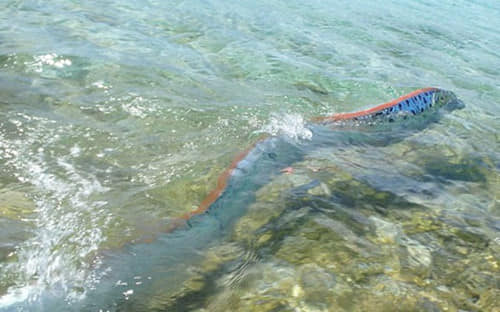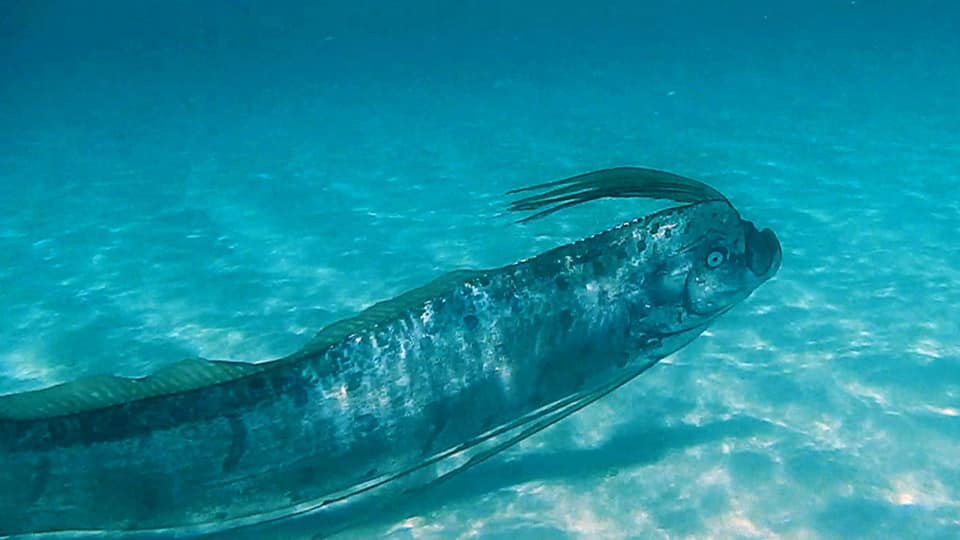The Giant Oarfish (Regalecus glesne) – A Marvel of the Deep Sea

The deep sea is home to an array of fascinating and mysterious creatures, and one such marvel is the Giant Oarfish, scientifically known as Regalecus glesne. Known for its majestic appearance and remarkable size, this unique fish captures the imagination of scientists and enthusiasts alike.
The Giant Oarfish is renowned for its incredible length, often reaching up to 11 meters (36 feet) long, and it holds the record for being the longest bony fish in the world. Its slender body, covered in silvery-blue scales, is elongated and ribbon-like, resembling the shape of an oar, hence its name. The dorsal fin undulates along its entire length, giving it an ethereal and almost serpentine appearance as it gracefully glides through the water.

This mesmerizing creature is primarily found in the depths of the open ocean, often at depths ranging from 200 to 1,000 meters (650 to 3,300 feet). Due to its elusive nature and preference for deep waters, encounters with the Giant Oarfish are rare, and much of its behavior and life cycle remain a mystery.
Feeding primarily on small fish and plankton, the Giant Oarfish is equipped with a small, toothless mouth perfectly adapted for its diet. Its long, red dorsal fin acts as a lure, attracting unsuspecting prey to its waiting jaws. Despite its size, the Giant Oarfish is not considered a threat to humans, as it is a passive and gentle creature.
One of the most fascinating aspects of the Giant Oarfish is its ability to produce bioluminescent light. Along its body, it possesses light-producing organs called photophores, which can emit a glowing display. This adaptation serves multiple purposes, including communication, attracting prey, and potentially even warding off predators in the dark depths of the ocean.
Due to its rare sightings and deep-sea habitat, much of the knowledge about the Giant Oarfish comes from occasional strandings or chance encounters with fishermen or divers. These encounters provide valuable opportunities for scientists to study and learn more about this enigmatic species.
In many cultures, the Giant Oarfish has garnered mythical status, often associated with sea serpents or other legendary creatures of the deep. Its impressive appearance and elusive nature have fueled folklore and legends throughout history, adding to its mystique.
While the Giant Oarfish remains a captivating and awe-inspiring creature, it also faces threats in its natural habitat. Pollution, overfishing, and habitat destruction pose significant challenges to its survival. Conservation efforts, such as marine protected areas and sustainable fishing practices, are essential to safeguarding the Giant Oarfish and preserving the delicate balance of the deep-sea ecosystem.
The Giant Oarfish, with its remarkable size, graceful appearance, and mysterious nature, is a true marvel of the deep sea. As we continue to explore and understand the secrets of the ocean, we must strive to protect and conserve these extraordinary creatures and the fragile habitats they call home.





